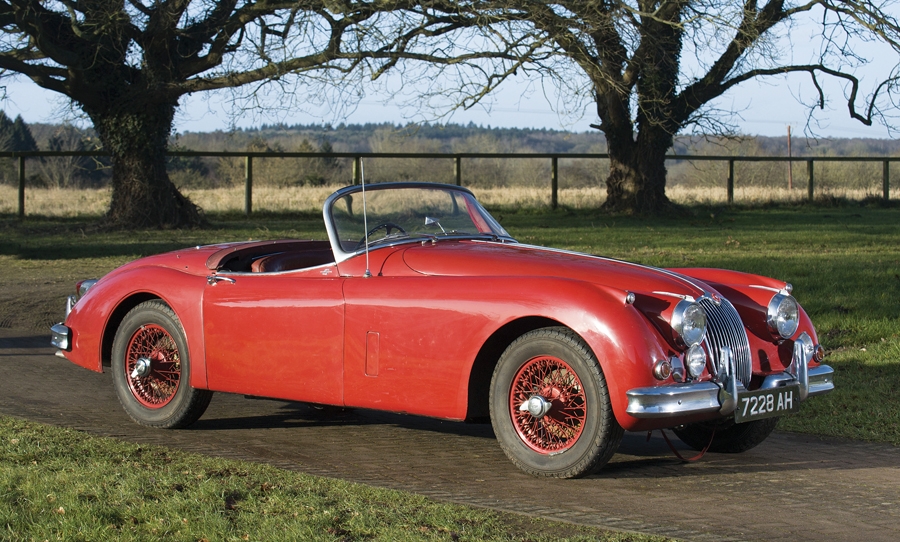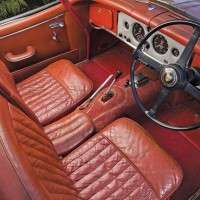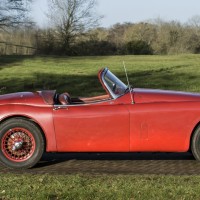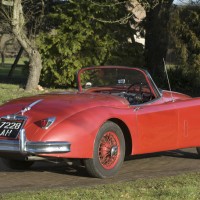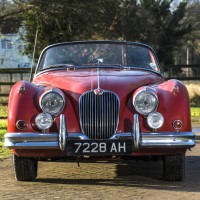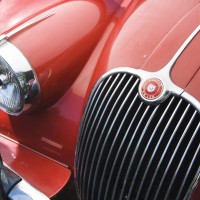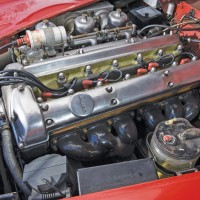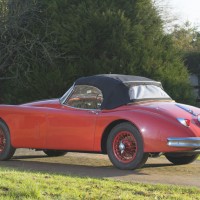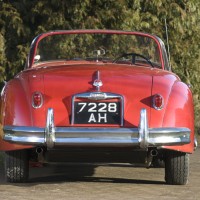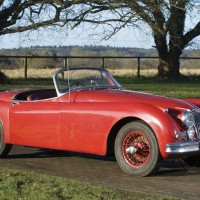SCM Analysis
Detailing
| Vehicle: | |
| Years Produced: | 1958–60 |
| Number Produced: | 888 (all 3.4S OTS) |
| Original List Price: | $5,120 |
| SCM Valuation: | $150,000–$200,000 |
| Tune Up Cost: | $650 |
| Chassis Number Location: | Plate on firewall |
| Engine Number Location: | On block above oil filter |
| Club Info: | The International XK Club |
| Website: | http://www.xkclub.com |
| Alternatives: | 1951–54 Nash Healey, 1956–59 BMW 507, 1961–65 Jaguar S1 3.8 Open Two Seater |
| Investment Grade: | A |
This car, Lot 56, sold for $334,940, including buyer’s premium, at Bonhams’ first sale at the 73rd Members Meeting at Goodwood on March 21, 2015.
This was a nice old XK: It looked very original, with decent door gaps, a nicely preserved interior and original toolkit — and the early, original transmission tunnel overdrive lever, which is a curiosity today, especially as so many old Jags have received modern 5-speed transmissions. The paint had slightly dulled in places, so some of it might not be as old as the rest of the car, and the leather was well creased and patinated with one small tear — but there are such things in this world as T-Cut, Hide Food and what used to be called elbow grease.
A one-family original
Originality has an increasingly important place in today’s collector car world, and the market currently prizes it above all else. But what made this car really special is that it had been in one-family ownership from new. This means that, even if it hadn’t been loved and cherished all of its life and been dormant for the past decade, it hadn’t been through the motor trade, hadn’t been dolled up or blown over for sale or generally messed about with.
That the door fit was so good (they’re usually not on XKs at auction) was probably down to the fact that it had never been apart in its life, and all the better for it. Even if the new owner plans to obliterate all that lovely patina with a restoration, they know they’re starting with an original, unmolested car that’s correct in every detail.
The top XK at this sale
Our subject car compares with the car SCM originally asked me to write about, Lot 19, a nicely restored — but otherwise unremarkable — gray XK 150SE coupe. Nothing wrong with it, and at $111,399 it even looked to have a breath left in it for retail — but no Unique Selling Point either, apart from its lowish mileage. Or Lot 55, the XK 120 drophead coupe that on first glance looked absolutely gorgeous, with deep and lustrous black paint — and never mind the slightly odd cut-out rear spats. But it was a much older restoration and, peering through the door and panel gaps, you could see rust lurking in the structure, confirmed by more on the steering column, which should have been easy enough to clean off.
How much corrosion there is within will determine how much of the car has to come apart, and this is no doubt why potential buyers suddenly developed short arms and long pockets and it sold cheap for any open 120 at $95,387. It was cheap for a good reason.
Try to find another one
This brings us back to our subject roadster — or Open Two Seater, to give it its proper title. Very original cars like this just don’t come along very often, especially in right-hand-drive, home-market form. Most domestic-market cars were coupes and dropheads, and only 76 home-market XK 150 roadsters of all kinds were made against 2,187 for export, although the base 3.4 is thought to be rarest variant, outnumbered by SEs.
This is an early car. S roadsters started at chassis T820001; this is 820030. (T signifies S, S prefix on early cars signifies SE.)
Quite rightly, the market snapped it up at top dollar — three times the pre-sale estimate, though I suspect Bonhams always knew it would go for much more. This is an S roadster, after all, with a claimed 250 brake horsepower instead of the SE’s 210 — and whose values are only eclipsed by the 3.8S version, which uses the same motor that went into the E-type, with an alleged 265 bhp (yeah… right; all these claimed outputs were maybe achieved on a test bench with no ancillaries and optimized timing).
As an aside, the last digit of the engine number on Jags of this vintage indicates the compression ratio, in this case 9:1.
Someone’s got a cracker, and if the decision were mine, it wouldn’t be restored. The catalog promised it would be recommissioned before sale, so after a change of rubber and fluids — plus a damn good service including a compression test and very careful check of the motor before attempting to start it — I’d continue to wipe it over periodically with an oily rag and continue to relish this true survivor, in the same way that it has enjoyed and been enjoyed for the first 60 years of its life. Huge money — but well bought. ♦
(Introductory description courtesy of Bonhams.)
